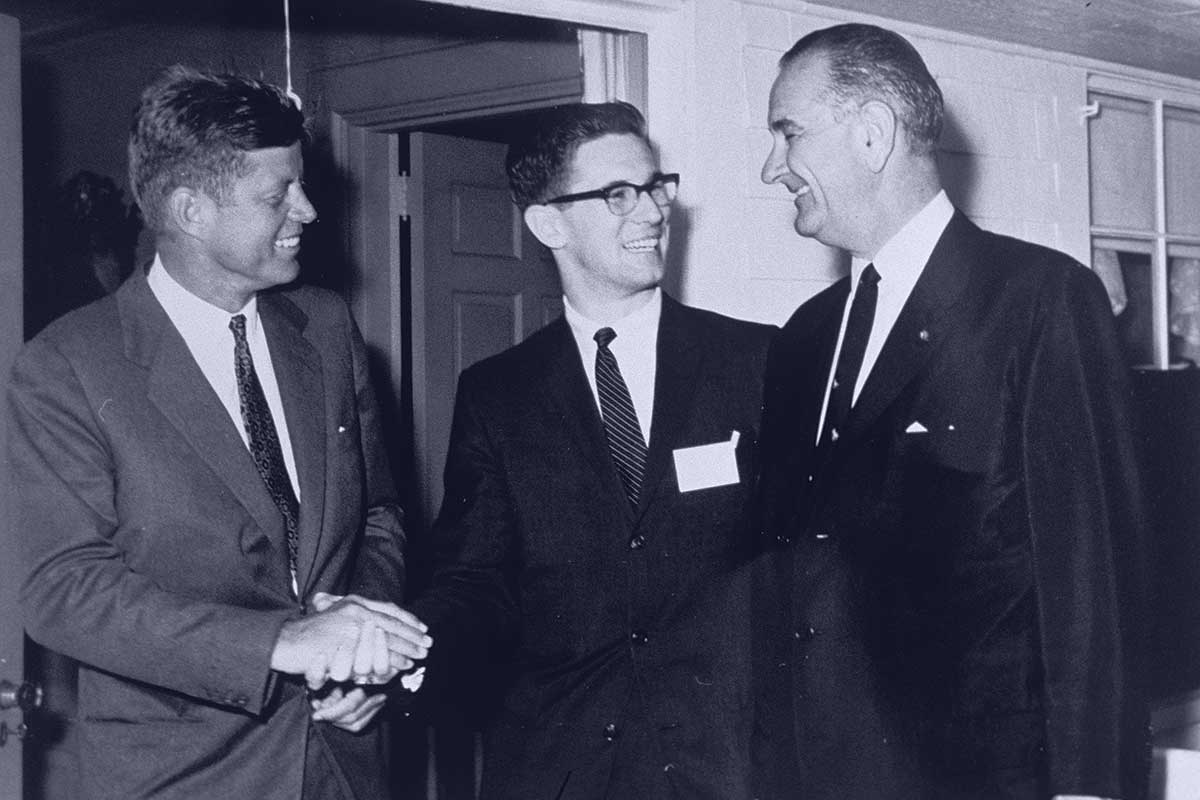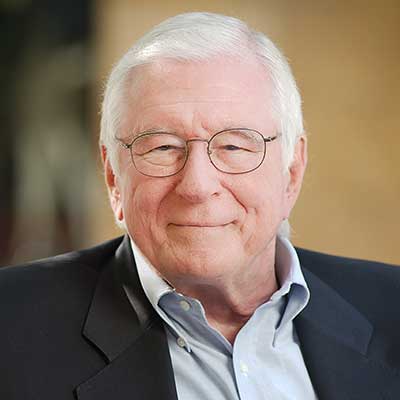Austin journalist Neal Spelce chronicled his memories of Lyndon B. Johnson and his career in the news media in With the Bark Off: A Journalist’s Memories of LBJ and a Life in the News Media (Tower Books, 2021).
For many years, outsiders had no idea that Austin and the Hill Country were hidden gems deep in the heart of Texas. Wasn’t the Lone Star State all about cowboys, sagebrush, and rattlesnakes—the John Wayne Western movie image? People elsewhere couldn’t imagine bountiful lakes and rolling hills covered in green woodlands anywhere in Texas.
But Lyndon Johnson grew up surrounded by those woods and grassy farmland, and that’s where he felt at home. Soon after winning the seat in the sprawling 10th U.S. Congressional District of Texas in 1937, his first elected office, he made it a priority to support President Franklin Roosevelt’s New Deal programs and bring hydroelectricity and power lines to rural Central Texas.
I had met LBJ historian Doris Kearns Goodwin on several occasions, and in her book Leadership: In Turbulent Times, she nailed what I heard LBJ say many times about “how he had brought electric power to the Hill Country, and how electricity had changed the daily lives of thousands of farm families, letting them enjoy such modern conveniences as electric lights, refrigerators, and washing machines for the first time.”
As a young congressman, Lyndon Johnson worked behind the scenes to secure federal funding to complete four hydroelectric dams in the chain of Highland Lakes that stretches for 85 miles from Austin to the northwest. His most important project was what is now Mansfield Dam. Lake Travis, a reservoir formed by the dam, provides drinking water for more than a million people in the Austin area. The lake is also a scenic recreation area with expensive shoreline homes and restaurants overlooking the water.
But Mansfield Dam’s essential function is to control a some-times raging Colorado River that for decades had flooded the capital city and smaller communities downriver.
It’s hard to believe now, but a study from the U.S. Army Corps of Engineers indicated that between 1900 and 1913, 17 floods had caused $61.4 million in property damage and claimed 61 lives. That’s a lot of damage in century-ago dollars and casualties. There are dramatic photographs of houses drifting through Austin’s downtown floodwaters in the old days.
In his remarks at the dedication of Buchanan Dam on October 16, 1937, Johnson said, “Today we are gathered here before this magnificent structure, a mighty bulwark against the blind and raging forces of nature, better to make it do our will.”
Less than a year later, after a great flood in July 1938, LBJ addressed a mass rally in Austin to reassure his constituents: “Yes, we are going to have four dams. They are going to hold back floodwater and they are going to pay for themselves with some electric power which doesn’t have to run through the cash register of a New York power and light company before it gets to our lamps. … We are going to keep building these dams in a business way. When we store up floodwaters, we are going to release them through hydroelectric turbines and we are going to sell the electricity … to the people. It will be the people’s electricity, and the people are going to get it at cost—for a small fraction of what they have been paying the power monopoly for 20 years.”
My family and I personally benefited from the creation of those lakes. We bought a small condo on Lake Travis and a boat, and we all enjoyed water skiing and family outings thanks to LBJ’s vision.
At the same time that LBJ was firming up the physical and economic infrastructure of his beloved homeland, the University of Texas was playing a leadership role in the emergence of technology research in the Austin area and in supporting the cultural and artistic ambience of “Athens on the Colorado.”
At the end of World War II, a couple of UT engineering professors negotiating on behalf of their university, C. Read Granberry and J. Neils Thompson, leased an old magnesium plant on 400 acres of prairie land north of the city, primarily to conduct military research and testing. In 1949, Senator Lyndon Johnson helped UT purchase the land from the federal government. There he was again, now a U.S. senator and a forceful advocate for his Texas constituents, securing land for what would first be called the Balcones Research Center and later the J. J. Pickle Research Campus. It was the first step in launching the University of Texas at Austin on its journey to become one of the leading research universities in America.
LBJ loved the University of Texas, even though he’d graduated from Southwest Texas State Teachers College (now Texas State University) in San Marcos, 30 miles to the south. But his wife, Claudia—Lady Bird—earned two bachelor’s degrees (history and journalism) from UT, and the couple shared a strong lifelong bond with the institution. At his commencement address at UT in 1964, the president invoked the university’s school spirit song, The Eyes of Texas: “A few nights ago in Washington, many thousands of people, among them leaders from all parts of this great land, rose from their seats with me as the band played The Eyes of Texas Are Upon You. Such a moment was full of pride for any Texan, but tonight it is not just the eyes of Texas which watch you—the eyes of the nation, the eyes of millions in faraway lands, the eyes of all who love liberty are upon you. You cannot get away. Do not think you can escape them until you have brought us to the early morn of a nation without rancor and a world without fear.”
It was a rousing, powerful speech in which he challenged a new generation of young Texans to be worthy of their heritage “in a booming state, in a bountiful land,” and to join him in building a Great Society. “The choice is yours,” he told the young graduates. “The power to shape the future is in your hands, the path is clear. It is the path of understanding and the path of unity.”



